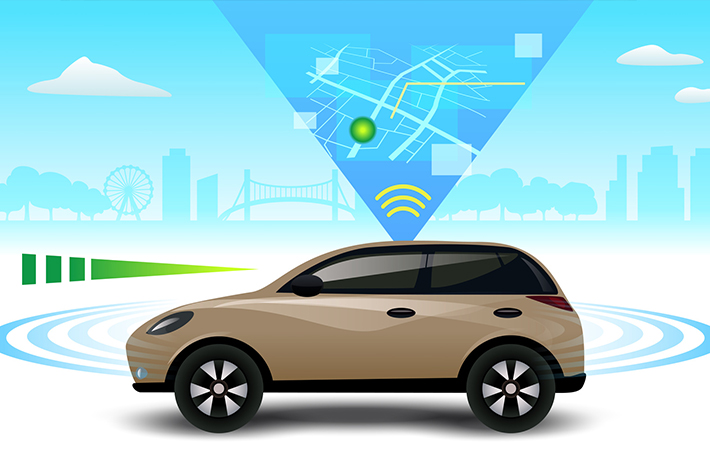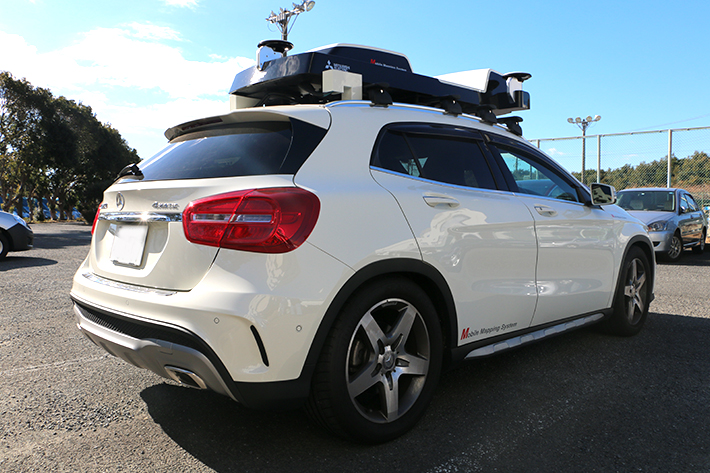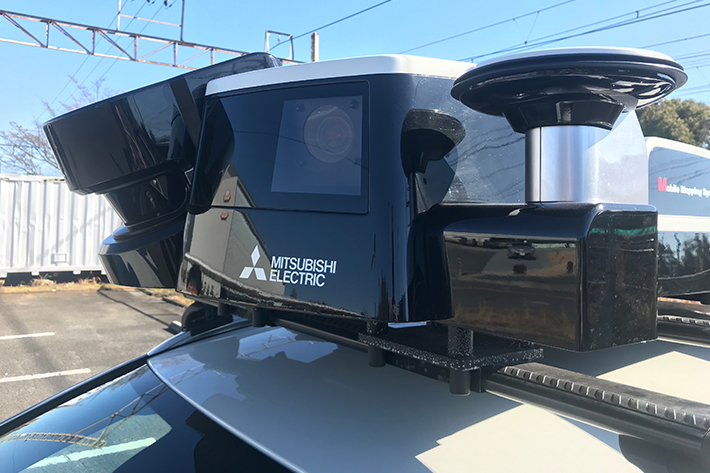
On January 18, 2019, Dynamic Map Platform Co., Ltd. (“Dynamic Map Platform”), a Tokyo-based company that provides 3D map data, and SoftBank Corp. conducted a trial in Kamakura to test the generation of high-precision 3D “dynamic maps” for automated driving.
While basic map data is already available for car navigation applications, to make automated driving a reality, high-precision maps are essential. SoftBank News attended the trial to get a closer look at how these maps will be created.
What are high-precision 3D “dynamic maps” for automated driving?

As self-driving is getting an increasing amount of attention in the press these days, it is useful to understand the definition of automated driving and the role of maps.
There are a total of six levels for automated driving as defined by Japan’s Public-Private ITS Initiative, ranging from Level 0 (no automation) to Level 5 (full automation). Note that Level 1 and Level 2 vehicles and systems are already on the market.
| Level | Driving agent | Description |
|---|---|---|
| Level 0 (No automation) |
Human | Human driver performs all driving tasks. |
| Level 1 (Driving assistance) |
Human | System performs one of the accelerating, braking and steering tasks handled by a human driver (ex. detecting obstacles for automated braking) |
| Level 2 (Partial automation) |
Human | System controls sequence of actions related to accelerating and steering (ex. can follow vehicle ahead of it on highways while staying in same lane) |
| Level 3 (Conditional automation) |
System (human fallback) |
System controls all driving actions, but human can take control in an emergency. Road and visibility conditions need to be at a defined level for easy driving. |
| Level 4 (High automation) |
System | System controls all driving actions. Road and visibility conditions need to be at defined level for easy driving. |
| Level 5 (Full automation) |
System | System controls all driving actions for all road conditions. |
* based on Public-Private ITS Initiative Roadmap 2017
The power of high-precision 3D “dynamic maps” comes into play for Level 3 and above, which require high levels of automation. For Level 3 and above, since it is systems—not humans—that are in control, vehicles need foundational maps to drive themselves. And 3D is also a must to judge road features like height clearances, slopes and curves.
That is where the high-precision 3D maps created by Dynamic Map Platform come in. In the future self-driving cars will operate by cross-checking location-based information and high-precision 3D map data.
The true purpose of the trial

The trial took place on a public road in Kamakura City. A vehicle was mounted with a laser camera system for creating highly-precise 3D maps. It drove for 27.7km and transmitted its measurement data to servers using SoftBank Corp.’s mobile network. Measurement data and the map completion rate could be confirmed almost in real time.

Laser camera system mounted on top of the vehicle. In one second, tens of thousands of laser beams were emitted to measure distances between physical objects. Location data was converted into dots, and this aggregation of dots created a 3D map.

Inside the car, a Mobile Mapping System (MMS) was connected to an LTE router by a cable. Measurement data was sent to SoftBank Corp.’s base stations from the router.
The crucial point of this trial was being able to confirm map-making in real time, which was made possible by adding telecommunications.
Explaining the purpose of the trials, Dynamic Map Platform’s Hiromichi Amagai said, “By incorporating SoftBank Corp.’s telecommunications, we could check measurement data in almost real time, which means we could create high-precision 3D maps efficiently. When creating maps for automated driving, you’re not finished after you make a map. The map needs to be constantly updated. In that sense the real time element afforded by telecommunications is crucial, and we have high expectations for 5G as it can handle high volumes of data at low latency.”

Hiromichi Amagai, a manager at Dynamic Map Platform Co., Ltd.
What was the result?
The video shows the creation of a 3D map in almost real time while the car is on the road despite some distracting vibrations. In short, the trial was a success!
For the purposes of this trial, SoftBank Corp. prepared a verification environment that used its closed network and cloud service for enterprises. Since the network that sent the data and the server processing the data were closed, data could be processed rapidly in a highly secure environment.
While SoftBank Corp.’s 4G network was used for this trial, with 5G it is expected that 3D information will be collected at higher resolutions and that processing speeds will be even faster.
(Original article posted on February. 22, 2019)
By SoftBank News Editors


